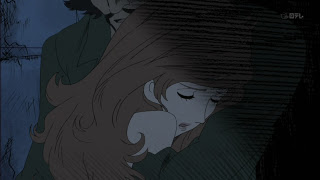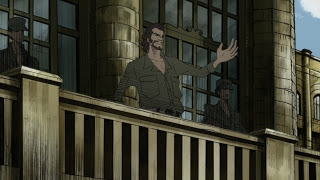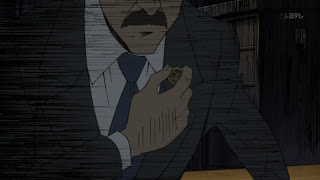![[sage]_Lupin_the_Third_-_Mine_Fujiko_to_Iu_Onna_-_07_[720p][10bit][92B0CE00].mkv_snapshot_03.44_[2012.05.18_16.03.46] [sage]_Lupin_the_Third_-_Mine_Fujiko_to_Iu_Onna_-_07_[720p][10bit][92B0CE00].mkv_snapshot_03.44_[2012.05.18_16.03.46]](https://lh5.ggpht.com/-bLw7kTPKS14/T7bl1mjAxyI/AAAAAAABM00/Y2uQPH9Kg7g/%25255Bsage%25255D_Lupin_the_Third_-_Mine_Fujiko_to_Iu_Onna_-_07_%25255B720p%25255D%25255B10bit%25255D%25255B92B0CE00%25255D.mkv_snapshot_03.44_%25255B2012.05.18_16.03.46%25255D_thumb.jpg?imgmax=800) |
![[sage]_Lupin_the_Third_-_Mine_Fujiko_to_Iu_Onna_-_07_[720p][10bit][92B0CE00].mkv_snapshot_08.25_[2012.05.18_16.08.45] [sage]_Lupin_the_Third_-_Mine_Fujiko_to_Iu_Onna_-_07_[720p][10bit][92B0CE00].mkv_snapshot_08.25_[2012.05.18_16.08.45]](https://lh6.ggpht.com/-qvx8wGOpuuc/T7bl3bz20oI/AAAAAAABM1E/ru2FBmyi7KQ/%25255Bsage%25255D_Lupin_the_Third_-_Mine_Fujiko_to_Iu_Onna_-_07_%25255B720p%25255D%25255B10bit%25255D%25255B92B0CE00%25255D.mkv_snapshot_08.25_%25255B2012.05.18_16.08.45%25255D_thumb.jpg?imgmax=800) |
![[sage]_Lupin_the_Third_-_Mine_Fujiko_to_Iu_Onna_-_07_[720p][10bit][92B0CE00].mkv_snapshot_17.16_[2012.05.18_16.17.35] [sage]_Lupin_the_Third_-_Mine_Fujiko_to_Iu_Onna_-_07_[720p][10bit][92B0CE00].mkv_snapshot_17.16_[2012.05.18_16.17.35]](https://lh3.ggpht.com/-X4ioX4ewzws/T7bl45qR7LI/AAAAAAABM1U/v-WG0gEEw_s/%25255Bsage%25255D_Lupin_the_Third_-_Mine_Fujiko_to_Iu_Onna_-_07_%25255B720p%25255D%25255B10bit%25255D%25255B92B0CE00%25255D.mkv_snapshot_17.16_%25255B2012.05.18_16.17.35%25255D_thumb.jpg?imgmax=800) |
Sometimes a cigar is just a cigar.
Let’s put last week’s unfortunate trainwreck behind us and move on, because Lupin III was pretty much back in its usual groove this week. Which is to say, it was sexy, stylish and funny while spinning an utterly preposterous story – this time a kind of “Fractured Fairy Tales” version of the Cuban revolution and the missile crisis that brought the world as close as it’s ever been to full-out nuclear annihilation. Sounds like pretty heavy stuff for Lupin III, it’s true, but this is not a show that’s ever really capable of being serious and that effectively deflated the somber tone before it had a chance to set in.
 A more halfhearted effort at disguising real-world people and places I’ve rarely seen, but then, that just proves that there was no effort at all. In the nation of “Carib” a revolutionary named “Fiadel Kestro” (Touchi Hiroki) has just taken the reins of power from a brutal dictatorship, and is about to fly to New York to address the UN. As always filling her kind of Zelig role as the one closest to the action, Fujiko Mine is in town, this time posing as a Japanese reporter. “Princesa” has wormed her way into Kestro’s heart (though he knows she’s not what she seems) in pursuit of her own agenda (as always). Also in town is Goemon Ishikawa, who the CIA is trying to recruit to assassinate Kestro. Filling out the stage are the US President (Arimoto Kinryuu) – nowhere near as suave and handsome as JFK – and the Soviet Leader (Houki Katsuhisa) who looks a lot more like his historical counterpart, Khrushchev. The stylized depictions of revolutionary Cuba are a visual feast, truly beautiful in all their psychedelic-Hirschfeldian glory.
A more halfhearted effort at disguising real-world people and places I’ve rarely seen, but then, that just proves that there was no effort at all. In the nation of “Carib” a revolutionary named “Fiadel Kestro” (Touchi Hiroki) has just taken the reins of power from a brutal dictatorship, and is about to fly to New York to address the UN. As always filling her kind of Zelig role as the one closest to the action, Fujiko Mine is in town, this time posing as a Japanese reporter. “Princesa” has wormed her way into Kestro’s heart (though he knows she’s not what she seems) in pursuit of her own agenda (as always). Also in town is Goemon Ishikawa, who the CIA is trying to recruit to assassinate Kestro. Filling out the stage are the US President (Arimoto Kinryuu) – nowhere near as suave and handsome as JFK – and the Soviet Leader (Houki Katsuhisa) who looks a lot more like his historical counterpart, Khrushchev. The stylized depictions of revolutionary Cuba are a visual feast, truly beautiful in all their psychedelic-Hirschfeldian glory.
 As is so often the case with Lupin, this is is a mix of anachronistic historical references – Castro took power in ‘59 and the missile crisis wasn’t until October of ‘62. Fujiko makes reference to The Beatles, who were still schoolboys when Castro took power and virtually unheard of in the Americas in 1962. There’s also a large emphasis on a secret oil field, discovering the location of which is Fujiko’s true aim, when in fact Cuba has relatively little oil (it imported heavily from the USSR) and oil was not a significant factor in either the revolution or the chess game the superpowers fought over the island. Where the series tacks closer to history is in its depiction of “Carib” as a tool in a much larger struggle between the US and USSR, the focal point of the entire cold war, and the touch paper that could have set off nuclear Armageddon (and very nearly did). I especially liked its usage of the Doomsday Clock, a very real device used by the Bulletin of the Atomic Scientists – originally to symbolize how close the world was to nuclear war but since expanded to include other threats to the planet, like climate change.
As is so often the case with Lupin, this is is a mix of anachronistic historical references – Castro took power in ‘59 and the missile crisis wasn’t until October of ‘62. Fujiko makes reference to The Beatles, who were still schoolboys when Castro took power and virtually unheard of in the Americas in 1962. There’s also a large emphasis on a secret oil field, discovering the location of which is Fujiko’s true aim, when in fact Cuba has relatively little oil (it imported heavily from the USSR) and oil was not a significant factor in either the revolution or the chess game the superpowers fought over the island. Where the series tacks closer to history is in its depiction of “Carib” as a tool in a much larger struggle between the US and USSR, the focal point of the entire cold war, and the touch paper that could have set off nuclear Armageddon (and very nearly did). I especially liked its usage of the Doomsday Clock, a very real device used by the Bulletin of the Atomic Scientists – originally to symbolize how close the world was to nuclear war but since expanded to include other threats to the planet, like climate change.
 When a show goes for this kind of a setting, it can’t expect to be free of having its politics scrutinized, and this certainly represented a fascinating riff on Cold War politics. I think most would conclude that it’s near-heroic depiction of Castro is romanticized quite a bit, even if his revolution was a direct result of a despotic regime that abused its people. The view of American and Soviet recklessness towards global security is pretty much a stock anime perspective – which is not to say that some of the resentment and suspicion towards the world powers isn’t justified. In terms of the characters themselves, I think we see Fujiko being exactly what she always is – someone whose ultimate goal is always service of self. It’s apt that she quizzes Kestro about his devotion to “ideals” in reporter mode, because this is a woman with absolutely no ideals apart from the pursuit of material and sensual pleasures.
When a show goes for this kind of a setting, it can’t expect to be free of having its politics scrutinized, and this certainly represented a fascinating riff on Cold War politics. I think most would conclude that it’s near-heroic depiction of Castro is romanticized quite a bit, even if his revolution was a direct result of a despotic regime that abused its people. The view of American and Soviet recklessness towards global security is pretty much a stock anime perspective – which is not to say that some of the resentment and suspicion towards the world powers isn’t justified. In terms of the characters themselves, I think we see Fujiko being exactly what she always is – someone whose ultimate goal is always service of self. It’s apt that she quizzes Kestro about his devotion to “ideals” in reporter mode, because this is a woman with absolutely no ideals apart from the pursuit of material and sensual pleasures.
 As always, it’s interesting to see Goemon, in this case still calling Fujiko “Maria” from their encounter during her Governess scam. The notion of a samurai standing on a biplane to cut Soviet missiles in two before they can start World War III is almost impossibly silly – but realism isn’t the point here, and asspulls are to be expected in Lupin. It’s a striking imagery (if not quite Slim Pickens riding a missile and waving a Stetson), and perhaps represents a little bit of wish fulfillment in terms of Japanese samurai spirit trumping all the evil technology of global bullies. Of all the regulars in this mythos I think Goemon is the most “at sea” when it comes to Fujiko – the one whose wiring makes him least able to understand her nature. In a show full of cynics with Fujiko at the top of the list, he’s the least cynical person in the cast – and that makes the two of them a fascinating contrast. It’s almost possible to convince myself that Fujiko feels a little affection for her Boifurenddo, for his ability to maintain a bit of his innocence in spite of everything he’s seen.
As always, it’s interesting to see Goemon, in this case still calling Fujiko “Maria” from their encounter during her Governess scam. The notion of a samurai standing on a biplane to cut Soviet missiles in two before they can start World War III is almost impossibly silly – but realism isn’t the point here, and asspulls are to be expected in Lupin. It’s a striking imagery (if not quite Slim Pickens riding a missile and waving a Stetson), and perhaps represents a little bit of wish fulfillment in terms of Japanese samurai spirit trumping all the evil technology of global bullies. Of all the regulars in this mythos I think Goemon is the most “at sea” when it comes to Fujiko – the one whose wiring makes him least able to understand her nature. In a show full of cynics with Fujiko at the top of the list, he’s the least cynical person in the cast – and that makes the two of them a fascinating contrast. It’s almost possible to convince myself that Fujiko feels a little affection for her Boifurenddo, for his ability to maintain a bit of his innocence in spite of everything he’s seen.
![[sage]_Lupin_the_Third_-_Mine_Fujiko_to_Iu_Onna_-_07_[720p][10bit][92B0CE00].mkv_snapshot_04.59_[2012.05.18_16.05.01] [sage]_Lupin_the_Third_-_Mine_Fujiko_to_Iu_Onna_-_07_[720p][10bit][92B0CE00].mkv_snapshot_04.59_[2012.05.18_16.05.01]](https://lh3.ggpht.com/-cCGSqAN-87c/T7bl6IRg0OI/AAAAAAABM1k/_neDXtCU1oQ/%25255Bsage%25255D_Lupin_the_Third_-_Mine_Fujiko_to_Iu_Onna_-_07_%25255B720p%25255D%25255B10bit%25255D%25255B92B0CE00%25255D.mkv_snapshot_04.59_%25255B2012.05.18_16.05.01%25255D_thumb.jpg?imgmax=800) |
![[sage]_Lupin_the_Third_-_Mine_Fujiko_to_Iu_Onna_-_07_[720p][10bit][92B0CE00].mkv_snapshot_06.04_[2012.05.18_16.06.06] [sage]_Lupin_the_Third_-_Mine_Fujiko_to_Iu_Onna_-_07_[720p][10bit][92B0CE00].mkv_snapshot_06.04_[2012.05.18_16.06.06]](https://lh6.ggpht.com/-nSrzPfe8j6w/T7bl7RByIUI/AAAAAAABM10/KCGUcCvDyWU/%25255Bsage%25255D_Lupin_the_Third_-_Mine_Fujiko_to_Iu_Onna_-_07_%25255B720p%25255D%25255B10bit%25255D%25255B92B0CE00%25255D.mkv_snapshot_06.04_%25255B2012.05.18_16.06.06%25255D_thumb.jpg?imgmax=800) |
![[sage]_Lupin_the_Third_-_Mine_Fujiko_to_Iu_Onna_-_07_[720p][10bit][92B0CE00].mkv_snapshot_06.27_[2012.05.18_16.06.46] [sage]_Lupin_the_Third_-_Mine_Fujiko_to_Iu_Onna_-_07_[720p][10bit][92B0CE00].mkv_snapshot_06.27_[2012.05.18_16.06.46]](https://lh6.ggpht.com/-t1hQxpJVTdI/T7bl8z5Y8TI/AAAAAAABM2E/fgWUdqkG7L8/%25255Bsage%25255D_Lupin_the_Third_-_Mine_Fujiko_to_Iu_Onna_-_07_%25255B720p%25255D%25255B10bit%25255D%25255B92B0CE00%25255D.mkv_snapshot_06.27_%25255B2012.05.18_16.06.46%25255D_thumb.jpg?imgmax=800) |
![[sage]_Lupin_the_Third_-_Mine_Fujiko_to_Iu_Onna_-_07_[720p][10bit][92B0CE00].mkv_snapshot_08.25_[2012.05.18_16.08.45] [sage]_Lupin_the_Third_-_Mine_Fujiko_to_Iu_Onna_-_07_[720p][10bit][92B0CE00].mkv_snapshot_08.25_[2012.05.18_16.08.45]](https://lh3.ggpht.com/-EwspU929Oxs/T7bl-S0LLFI/AAAAAAABM2U/Fg0iWxSXX6U/%25255Bsage%25255D_Lupin_the_Third_-_Mine_Fujiko_to_Iu_Onna_-_07_%25255B720p%25255D%25255B10bit%25255D%25255B92B0CE00%25255D.mkv_snapshot_08.25_%25255B2012.05.18_16.08.45%25255D_thumb%25255B1%25255D.jpg?imgmax=800) |
![[sage]_Lupin_the_Third_-_Mine_Fujiko_to_Iu_Onna_-_07_[720p][10bit][92B0CE00].mkv_snapshot_09.08_[2012.05.18_16.09.27] [sage]_Lupin_the_Third_-_Mine_Fujiko_to_Iu_Onna_-_07_[720p][10bit][92B0CE00].mkv_snapshot_09.08_[2012.05.18_16.09.27]](https://lh3.ggpht.com/-3WmzLxI6L8I/T7bl_2iJiII/AAAAAAABM2k/mJMDLh-R2eo/%25255Bsage%25255D_Lupin_the_Third_-_Mine_Fujiko_to_Iu_Onna_-_07_%25255B720p%25255D%25255B10bit%25255D%25255B92B0CE00%25255D.mkv_snapshot_09.08_%25255B2012.05.18_16.09.27%25255D_thumb.jpg?imgmax=800) |
![[sage]_Lupin_the_Third_-_Mine_Fujiko_to_Iu_Onna_-_07_[720p][10bit][92B0CE00].mkv_snapshot_09.23_[2012.05.18_16.09.42] [sage]_Lupin_the_Third_-_Mine_Fujiko_to_Iu_Onna_-_07_[720p][10bit][92B0CE00].mkv_snapshot_09.23_[2012.05.18_16.09.42]](https://lh6.ggpht.com/-sgb8LwVswek/T7bmBN07S4I/AAAAAAABM20/ZlumwcuUolk/%25255Bsage%25255D_Lupin_the_Third_-_Mine_Fujiko_to_Iu_Onna_-_07_%25255B720p%25255D%25255B10bit%25255D%25255B92B0CE00%25255D.mkv_snapshot_09.23_%25255B2012.05.18_16.09.42%25255D_thumb.jpg?imgmax=800) |
![[sage]_Lupin_the_Third_-_Mine_Fujiko_to_Iu_Onna_-_07_[720p][10bit][92B0CE00].mkv_snapshot_10.34_[2012.05.18_16.10.53] [sage]_Lupin_the_Third_-_Mine_Fujiko_to_Iu_Onna_-_07_[720p][10bit][92B0CE00].mkv_snapshot_10.34_[2012.05.18_16.10.53]](https://lh4.ggpht.com/-XqZ2PRVYxeY/T7bmCfzgGCI/AAAAAAABM3E/dWG9-gv2-6c/%25255Bsage%25255D_Lupin_the_Third_-_Mine_Fujiko_to_Iu_Onna_-_07_%25255B720p%25255D%25255B10bit%25255D%25255B92B0CE00%25255D.mkv_snapshot_10.34_%25255B2012.05.18_16.10.53%25255D_thumb.jpg?imgmax=800) |
![[sage]_Lupin_the_Third_-_Mine_Fujiko_to_Iu_Onna_-_07_[720p][10bit][92B0CE00].mkv_snapshot_11.07_[2012.05.18_16.11.26] [sage]_Lupin_the_Third_-_Mine_Fujiko_to_Iu_Onna_-_07_[720p][10bit][92B0CE00].mkv_snapshot_11.07_[2012.05.18_16.11.26]](https://lh6.ggpht.com/-N52pDJFYsR4/T7bmEFJ324I/AAAAAAABM3U/E_JDPILeNvs/%25255Bsage%25255D_Lupin_the_Third_-_Mine_Fujiko_to_Iu_Onna_-_07_%25255B720p%25255D%25255B10bit%25255D%25255B92B0CE00%25255D.mkv_snapshot_11.07_%25255B2012.05.18_16.11.26%25255D_thumb.jpg?imgmax=800) |
![[sage]_Lupin_the_Third_-_Mine_Fujiko_to_Iu_Onna_-_07_[720p][10bit][92B0CE00].mkv_snapshot_12.11_[2012.05.18_16.12.30] [sage]_Lupin_the_Third_-_Mine_Fujiko_to_Iu_Onna_-_07_[720p][10bit][92B0CE00].mkv_snapshot_12.11_[2012.05.18_16.12.30]](https://lh5.ggpht.com/-I2dS8MQPO-I/T7bmFeW5vxI/AAAAAAABM3k/lw3WAXeV7hw/%25255Bsage%25255D_Lupin_the_Third_-_Mine_Fujiko_to_Iu_Onna_-_07_%25255B720p%25255D%25255B10bit%25255D%25255B92B0CE00%25255D.mkv_snapshot_12.11_%25255B2012.05.18_16.12.30%25255D_thumb.jpg?imgmax=800) |
![[sage]_Lupin_the_Third_-_Mine_Fujiko_to_Iu_Onna_-_07_[720p][10bit][92B0CE00].mkv_snapshot_15.19_[2012.05.18_16.15.38] [sage]_Lupin_the_Third_-_Mine_Fujiko_to_Iu_Onna_-_07_[720p][10bit][92B0CE00].mkv_snapshot_15.19_[2012.05.18_16.15.38]](https://lh5.ggpht.com/-UlSCVeFyTn8/T7bmHfL5mhI/AAAAAAABM30/E3N5pPcuWng/%25255Bsage%25255D_Lupin_the_Third_-_Mine_Fujiko_to_Iu_Onna_-_07_%25255B720p%25255D%25255B10bit%25255D%25255B92B0CE00%25255D.mkv_snapshot_15.19_%25255B2012.05.18_16.15.38%25255D_thumb.jpg?imgmax=800) |
![[sage]_Lupin_the_Third_-_Mine_Fujiko_to_Iu_Onna_-_07_[720p][10bit][92B0CE00].mkv_snapshot_16.37_[2012.05.18_16.16.56] [sage]_Lupin_the_Third_-_Mine_Fujiko_to_Iu_Onna_-_07_[720p][10bit][92B0CE00].mkv_snapshot_16.37_[2012.05.18_16.16.56]](https://lh5.ggpht.com/-mp01mMBjyWI/T7bmI6-HbNI/AAAAAAABM4E/Dr3YcjT1Vls/%25255Bsage%25255D_Lupin_the_Third_-_Mine_Fujiko_to_Iu_Onna_-_07_%25255B720p%25255D%25255B10bit%25255D%25255B92B0CE00%25255D.mkv_snapshot_16.37_%25255B2012.05.18_16.16.56%25255D_thumb.jpg?imgmax=800) |
![[sage]_Lupin_the_Third_-_Mine_Fujiko_to_Iu_Onna_-_07_[720p][10bit][92B0CE00].mkv_snapshot_16.41_[2012.05.18_16.17.00] [sage]_Lupin_the_Third_-_Mine_Fujiko_to_Iu_Onna_-_07_[720p][10bit][92B0CE00].mkv_snapshot_16.41_[2012.05.18_16.17.00]](https://lh5.ggpht.com/-LnJlR2gDV6s/T7bmKs9sGNI/AAAAAAABM4U/H73w2-2akIw/%25255Bsage%25255D_Lupin_the_Third_-_Mine_Fujiko_to_Iu_Onna_-_07_%25255B720p%25255D%25255B10bit%25255D%25255B92B0CE00%25255D.mkv_snapshot_16.41_%25255B2012.05.18_16.17.00%25255D_thumb.jpg?imgmax=800) |
![[sage]_Lupin_the_Third_-_Mine_Fujiko_to_Iu_Onna_-_07_[720p][10bit][92B0CE00].mkv_snapshot_16.45_[2012.05.18_16.17.04] [sage]_Lupin_the_Third_-_Mine_Fujiko_to_Iu_Onna_-_07_[720p][10bit][92B0CE00].mkv_snapshot_16.45_[2012.05.18_16.17.04]](https://lh6.ggpht.com/-5jb2T8x2_Vw/T7bmL1Bk51I/AAAAAAABM4k/x7jxLq8S-yM/%25255Bsage%25255D_Lupin_the_Third_-_Mine_Fujiko_to_Iu_Onna_-_07_%25255B720p%25255D%25255B10bit%25255D%25255B92B0CE00%25255D.mkv_snapshot_16.45_%25255B2012.05.18_16.17.04%25255D_thumb.jpg?imgmax=800) |
![[sage]_Lupin_the_Third_-_Mine_Fujiko_to_Iu_Onna_-_07_[720p][10bit][92B0CE00].mkv_snapshot_16.50_[2012.05.18_16.17.09] [sage]_Lupin_the_Third_-_Mine_Fujiko_to_Iu_Onna_-_07_[720p][10bit][92B0CE00].mkv_snapshot_16.50_[2012.05.18_16.17.09]](https://lh5.ggpht.com/-hJvZSwzXN84/T7bmNUSVz1I/AAAAAAABM40/iB2AZrhjDA8/%25255Bsage%25255D_Lupin_the_Third_-_Mine_Fujiko_to_Iu_Onna_-_07_%25255B720p%25255D%25255B10bit%25255D%25255B92B0CE00%25255D.mkv_snapshot_16.50_%25255B2012.05.18_16.17.09%25255D_thumb.jpg?imgmax=800) |
![[sage]_Lupin_the_Third_-_Mine_Fujiko_to_Iu_Onna_-_07_[720p][10bit][92B0CE00].mkv_snapshot_18.46_[2012.05.18_16.19.21] [sage]_Lupin_the_Third_-_Mine_Fujiko_to_Iu_Onna_-_07_[720p][10bit][92B0CE00].mkv_snapshot_18.46_[2012.05.18_16.19.21]](https://lh6.ggpht.com/-Ks_imsvvYyI/T7bmPBrzc2I/AAAAAAABM5E/75BQn9bmD_I/%25255Bsage%25255D_Lupin_the_Third_-_Mine_Fujiko_to_Iu_Onna_-_07_%25255B720p%25255D%25255B10bit%25255D%25255B92B0CE00%25255D.mkv_snapshot_18.46_%25255B2012.05.18_16.19.21%25255D_thumb.jpg?imgmax=800) |
![[sage]_Lupin_the_Third_-_Mine_Fujiko_to_Iu_Onna_-_07_[720p][10bit][92B0CE00].mkv_snapshot_19.32_[2012.05.18_16.20.07] [sage]_Lupin_the_Third_-_Mine_Fujiko_to_Iu_Onna_-_07_[720p][10bit][92B0CE00].mkv_snapshot_19.32_[2012.05.18_16.20.07]](https://lh5.ggpht.com/-5XETuReFdS0/T7bmQqUoG2I/AAAAAAABM5U/Xqmq4ZIepIA/%25255Bsage%25255D_Lupin_the_Third_-_Mine_Fujiko_to_Iu_Onna_-_07_%25255B720p%25255D%25255B10bit%25255D%25255B92B0CE00%25255D.mkv_snapshot_19.32_%25255B2012.05.18_16.20.07%25255D_thumb.jpg?imgmax=800) |
![[sage]_Lupin_the_Third_-_Mine_Fujiko_to_Iu_Onna_-_07_[720p][10bit][92B0CE00].mkv_snapshot_19.57_[2012.05.18_16.20.32] [sage]_Lupin_the_Third_-_Mine_Fujiko_to_Iu_Onna_-_07_[720p][10bit][92B0CE00].mkv_snapshot_19.57_[2012.05.18_16.20.32]](https://lh5.ggpht.com/-dcO0ITxqfr0/T7bmSEu6xGI/AAAAAAABM5k/4fba8Qo7qzY/%25255Bsage%25255D_Lupin_the_Third_-_Mine_Fujiko_to_Iu_Onna_-_07_%25255B720p%25255D%25255B10bit%25255D%25255B92B0CE00%25255D.mkv_snapshot_19.57_%25255B2012.05.18_16.20.32%25255D_thumb.jpg?imgmax=800) |
![[sage]_Lupin_the_Third_-_Mine_Fujiko_to_Iu_Onna_-_07_[720p][10bit][92B0CE00].mkv_snapshot_20.44_[2012.05.18_16.21.19] [sage]_Lupin_the_Third_-_Mine_Fujiko_to_Iu_Onna_-_07_[720p][10bit][92B0CE00].mkv_snapshot_20.44_[2012.05.18_16.21.19]](https://lh4.ggpht.com/-nG14MigTVCQ/T7bmTYCsYLI/AAAAAAABM50/vkOSo4M06JE/%25255Bsage%25255D_Lupin_the_Third_-_Mine_Fujiko_to_Iu_Onna_-_07_%25255B720p%25255D%25255B10bit%25255D%25255B92B0CE00%25255D.mkv_snapshot_20.44_%25255B2012.05.18_16.21.19%25255D_thumb.jpg?imgmax=800) |






Beckett
May 19, 2012 at 7:22 amSo next time you're playing rock paper scissors and your friend tries to cheat by throwing missile "because it totally beats all three", throw sword, because obviously it beats missile.
This episode ALMOST set a new record by going the whole distance without showing Mine's boobies, but then they managed to work it in right at the end. I was seriously worried for a while there that the show creator's had been abducted by pod people.
Also, is Mine the WORST at covert ops, or what? She barely ever even bothers to use a psuedonym, this is some kind of amateur hour right here.
Litho
May 19, 2012 at 2:35 pmC'mon Enzo!!
How can Goemon cutting missiles be silly? He's freakin GOEMON, for heaven's sake. The most badass character since Mushishi's Ginko and Potemayo's Guchoko. Missiles are nothing. He cuts nuclear mushroom-clouds and Death Stars for breakfast!!
I know we're only halfway through, but I'm giving this season's Best Art Direction award to this series right now.